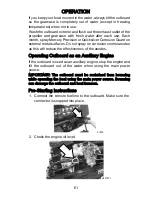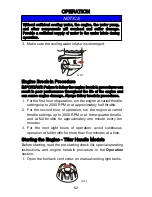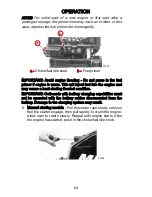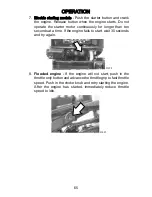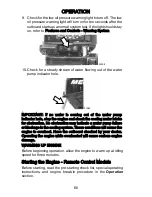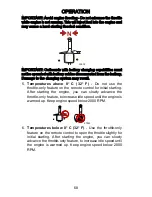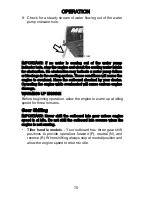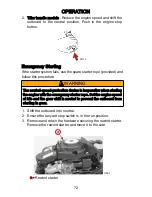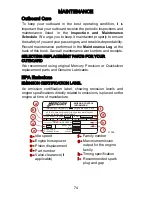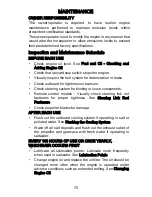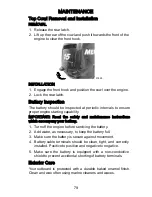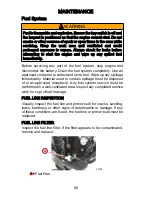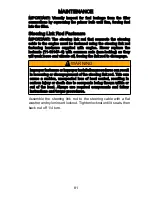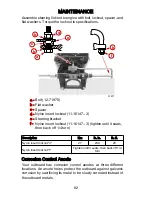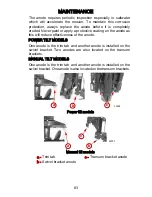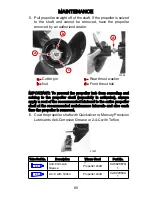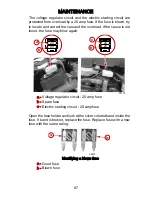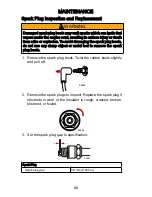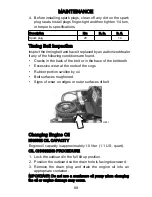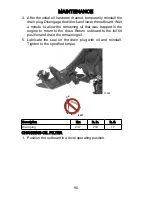
MAINTENANCE
75
OWNER RESPONSIBILITY
The owner/operator is required to have routine engine
maintenance performed to maintain emission levels within
prescribed certification standards.
The owner/operator is not to modify the engine in any manner that
would alter the horsepower or allow emissions levels to exceed
their predetermined factory specifications.
Inspection and Maintenance Schedule
BEFORE EACH USE
• Check engine oil level. See Fuel and Oil ‑ Checking and
Adding Engine Oil.
• Check that lanyard stop switch stops the engine.
• Visually inspect the fuel system for deterioration or leaks.
• Check outboard for tightness on transom.
• Check steering system for binding or loose components.
• Remote control models ‑ Visually check steering link rod
fasteners for proper tightness. See Steering Link Rod
Fasteners.
• Check propeller blades for damage.
AFTER EACH USE
• Flush out the outboard cooling system if operating in salt or
polluted water. See Flushing the Cooling System.
• Wash off all salt deposits and flush out the exhaust outlet of
the propeller and gearcase with fresh water if operating in
saltwater.
EVERY 100 HOURS OF USE OR ONCE YEARLY,
WHICHEVER OCCURS FIRST
• Lubricate all lubrication points. Lubricate more frequently
when used in saltwater. See Lubrication Points.
• Change engine oil and replace the oil filter. The oil should be
changed more often when the engine is operated under
adverse conditions such as extended trolling. See Changing
Engine Oil.

